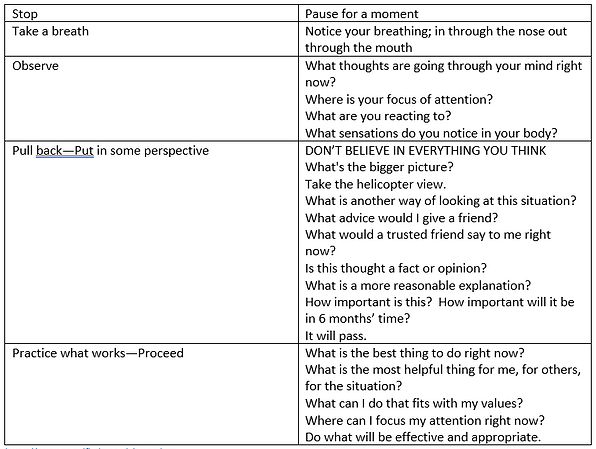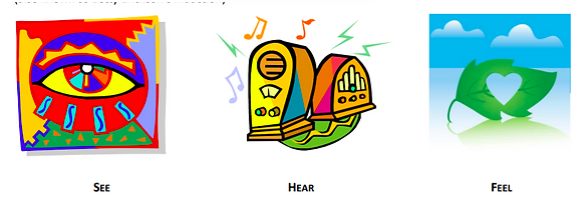Take Your Time
Not everything needs an immediate reaction or response. In life, 99% of the time we can step back, take a moment to process, or avert the situation all together, but we do not need to jump into action. There is only about 1% of the time where we must act immediately. Let’s break this concept down.
When situations occur that are not in our schedule, outside of the norm or outside of our control, we become flustered and have this innate need to act. We create this false sense of urgency that things must be handled when they happen otherwise, we assume the worst. In all actuality, this is false. We have the ability to step away from any stressors, take some time to process, calm down, refresh, return to baseline, then revisit the situation (if necessary), with fresh eyes. When we do not take this time to ourselves, then we can become overwhelmed, anxious, and cause many more emotions to rise. In most cases, as our emotions begin to rise and take the driver seat, rationality begins to leave. One can not effectively problem solve when in a tizzy.
Here are some common examples and exercises that you can try
Ex: You and your partner are having an argument
This is the most common situation that occurs. Typically, our partners are the ones we talk to the most and divulge the most information to. So, when that equilibrium is off, and you feel that this individual is your enemy in battle, it causes you to become defensive, hostile, and feel the need to act. Instead of immediately responding to the stressors, try this:
“Hey, I understand that you are upset. You have a right to feel that way. I feel that I am becoming upset too and I do not want this to become a fight. Do you mind if we revisit this in an hour after we have both cooled down?”
When using this phrasing or something similar, you are empathizing with your partner and acknowledging that they are upset but also informing them that you are becoming increasingly upset and talking about this subject now is not a good idea when emotions are high.
During the cool down period, utilize a guided meditation to further relax you.
Bullet point the things you would like to discuss with your partner that way you already know what you want to address, you won’t forget anything, and you won’t get frustrated trying to remember your points. Also, this helps cut the discussion time in half as this is more concise as opposed to “winging-it.”
STOPP exercise
Using this exercise is great when you feel anxious or panicky about a situation. It forces you to stop, identify your trigger, change perspective, and implement a coping skill to move forward. This exercise only takes a few mins but is very helpful at distracting your thoughts.
Guided meditation walks
Have you ever emotionally stormed off and ended up at a location and you did not know how you got there, how long you had been walking, or how far you had gone? Instead of flying off, try a guided walk. This will allow you to focus on your body and your surroundings. Taking a 5-10-min daily walk has proven to help reduce symptoms of depression and give you a deeper appreciation for nature. Find a park nearby or just step out of your front door and get going. Try this handy video on YouTube to get you started:
This exercise is based in grounding practices. It asks for you to pay attention to your environment as a means of distraction or relaxation. This can be used to help with stressful situations or to help relax before bed!
Full body scan
A body scan asks us to bring awareness to places in our body that we have tension, stress, and where we may be more relaxed. Through this exercise, we can relax our bodies and bring ease to those areas where we identified strain.
Guided meditation Yoga
Exercise is always a great way to relax and blow off some steam. Using a guided meditation yoga video brings in mindfulness and awareness to our bodies, but with someone else as the guiding voice so we don’t have to do all the thinking 😊
Ex: Supervisor doing/saying something you do not like or that triggers you?
- Identify whether this is a situation you need to cope or avert.
- If the answer is averting, you can utilize one of the strategies above or below.
o Take a walk around the office.
o Go to the bathroom and splash cold water on your face.
o Get fresh air outside.
o Have a snack.
o Talk to your co-workers/bounce ideas off of them.
o Listen to music (if permitted).
Once you feel you have calmed down enough, then you may address the concern.
IT IS OKAY TO CHILL
This is such an important statement. It is okay to relax and take some time for yourself. You do not always need to be on the go. I know, that may seem weird for you. However, you need to become more comfortable with relaxation and self-care otherwise you run the risk of overexertion and burn out, both of which are not a fun time. If you must schedule “chill time” in your busy schedule so you know that this is YOUR time, then do so. Try to schedule at least 30 mins-1 hour of personal time for yourself. Do not forget that relaxing is just as important as working!
These tools and examples can be used for anything and are interchangeable! Always remember, keep a cool head, keep emotions low and out of the driver’s seat. We want to problem solve rationally, efficiently, and with the best possible solution.
Protect your peace and mental health. You only have one. TiL next time, Peace! ☮



